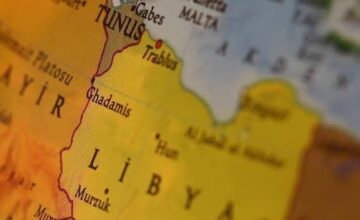RUSEN [ANALYSİS]: Russia and The EU, ”In The Mıddle of Donbass Conflıct ”

Imperial Times and Historical Background
The relations between Russia and European states have been developed for many years, experiencing on ups and downs throughout the history. During Imperial times, especially when Russia was ruled by Peter the Great, Ekaterina II and so many other tsars there were tight connections between Russian and European cultures. The considerable efforts of Russian rulers to bring European values from France, Germany and Prussia in order to establish cultural exchange under the peaceful umbrella to the wide lands of their Empire were inevitably important at that time. Since then, both Russia and Europe were experienced many geopolitical rapprochements and confrontations in Eurasian continent during many centuries.
When we came up to 1980s, it was inevitably for USSR to reconstruct Soviet economic and political system. Seeking to bring the Soviet Union up to economic par with capitalist countries such as Germany, Japan and the United States, Gorbachev decentralized economic controls, and encouraged enterprises to become self-financing, in line with his policy under the name of “perestroika”.
The reason for taking such actions was gradually dwindling natural resources and staying behind the West, which reached the higher level of wealth, especially by a well-established democratic system, Free Trade Agreements, and free movements of capitals, goods and services as well as liberalization of the political economy.
Beginning with “perestroika” Russia and EU have started to develop their economic and political relations. After the dissolution of the Soviet Union, when Boris Yeltsin came to power in Russia, he introduced a series of reforms; try to move Russia from a socialist command economy to a free market liberal democracy. The Yeltsin era was a traumatic period in Russian history; a period marked by massive, growing corruption, the loss of a sense of national identity, economic upheaval, and enormous political and social problems. During the rule of Yeltsin, Russia was trying to find its place in the EU liberal markets, needed and received many financial supports from the European Union.
When we came up to 2000s, the EU hasn’t been a model for Russia anymore, moreover, it has become an economic and political partner. The fact that Putin’s government started to use energy policy, which is Russia’s most powerful foreign policy instrument, in the most rational way what turned the two actors to be mutually dependent on each other.
Russia and the EU today
Today, geopolitical and economic confrontations between Russia and EU mainly consist in that both actors attract Eastern Europe countries to their own side. Therefore, undoubtedly the major victim of that confrontation is Ukraine since its government has been entering the EU radar. The EU Neighborhood Policy (ENP), which composes dialogues with countries such as Romania, Bulgaria, Georgia, Latvia and other former Soviet Union countries, obviously overlaps with Russia’s ‘near abroad’ policy in the post-soviet lands. The Russian government is not willing the EU to increase the room for maneuvers in the Black Sea via using the ENP Russia considers Ukraine as a buffer zone, balancing European eastward enlargement. That’s why Ukraine is strategically important for Russia.
Why and how much did the bilateral relations between Russia and Ukraine break up after 1991?
Expansionism was one of the essential elements of Russian policy during Imperial and Soviet times; even today it is possible to see some sights of Russian expansionism. e.g. South Ossetia war, the annexation of the Crimean peninsula and recently the Syrian War.
Nevertheless, we have witnessed different types of expansionism; in the Soviet era, it mostly determined by an ideological basis, however, for contemporary Russia, it depends on to cut off the influence of West over former Soviet countries via protecting geopolitical borders and providing national security. Therefore, Putin’s “near abroad policy” and his emphasizes on the importance of Eurasian region are good examples of protecting national borders of post-Soviet geography. Expansion of NATO, and EU enlargement policies towards the east have seen as a considerable threat by Russian government against its national security.
That is why for Russia it has been very critical to have a pro-Russian government in Ukraine and prevent its “little brother” to move towards EU and NATO axis.
Clash of ENP & Near Abroad Policy
The ENP has been launched in 2003 and developed throughout 2004. It governs the EU’s relations with 16 of the EU’s closest Eastern and Southern Neighbors including post-Soviet countries: Armenia, Azerbaijan, Belarus, Georgia, Moldova, and Ukraine. On the other hand, Russia’s “near abroad” policy refers to protect ethnic minorities and Russian speaking populations in former Soviet countries. In a nutshell, for the EU, western Ukraine is crucial in terms of opening to the Black Sea and accomplishing its ENP goals while for Russia the ENP cause a threat to its “near abroad policy” and its Eurasianist character.
Orange Revolution and its consequences: Gas disputes of 2006 & 2009
In 2004-2005, mass protests lasting for two months – the Orange Revolution – helped bring to power pro-Western President Viktor Yushchenko, who defeated his rival Viktor Yanukovych in a repeat run-off election. Ukraine’s “Orange Revolution” was a genuine outpouring of popular sentiment for freedom and justice, strongly supported by the West.
Media show revolution almost like a democracy festival, aimed at winning the sympathy of Europeans and Americans. Russia was clearly unhappy and warned the West to back off. Yushchenko became the elected president of Ukraine, but the economic problem (most sensitive issue) was not solved…
Dramatic political events in Kiev in 2004 were followed by dramatic developments in relation to Ukrainian-Russian gas supplies in 2005. Gazprom and Naftogaz were not able to agree on price issue over Russian backed Turkmen gas supplies. (Ukraine was agreed to buy Turkmen gas due to its debts to Gazprom from past years). Followingly, Ukrainian government demanded decrease of gas prices while at the same time demanded an increase in transit tariffs. The parties could not agree on gas prices, and as a result, Gazprom cut off gas supplies to Ukraine.
Russian side was attempting to put pressure on Ukraine after the Orange Revolution. Putin intended to put pressure on Russia’s western neighbor in the hope of unseating its leader. The pressure on Ukraine was obviously political, and the intended pressure focused on countries that either left the Soviet Union (Baltic countries) or elected pro-European (rather than pro-Russian) governments; and Gazprom has implemented price increases for all the CIS countries in 2006 (except Belarus). The aim of the mentioned political pressure was also targeting the EU intervention and support of the revolutionary movements in Ukraine, because the Russian government regarded it as an axiom that the EU is the most dependent actor of Russian natural gas supplies.
When we came up to 2009 Gas dispute between Russia and Ukraine, the two sides again failed to agree on a price for Russian gas supply to Ukraine and a tariff for the transit of Russian gas to Europe. Russian exports to Ukraine were cut off on 1 January, and exports to 16 EU member states and Moldova were drastically reduced on 6 January and cut off completely from 7 January. Russia was blaming Ukraine for stolen 65 million cubic meters of gas per day, which was expected to reach to Europe. The reason was the same as in the previous gas dispute; to put political pressure in order to warn CIS countries, not only Ukraine, to take careful steps in processes of the eastward expansion of NATO and the EU.
Importance of Crimean Peninsula for Russia
Before we start to analyze the circumstances of Euromaidan, Donbass War and Crimean annexation, which should be known as critical points in foreign policies of Russia, the EU and Ukraine at once, it is important to comprehend why the Crimean Peninsula is so indispensable for the Russian government.
The transfer of Crimea to Ukraine was completed by Nikita Khrushchev in 1954, under the slogan of “endless friendship of Russian and Ukrainian nations”. Probably, the reason behind it was that Russians, Ukrainians and Belarusians acted as one single nation under the umbrella of the United Nations in post-World War II environment.
However, Crimea has been one of the most important strategic places for Russia throughout the history, especially due to the Naval Base in Sevastopol; and it has seen as a crucial location in order to secure and increase the domination of Russia in the Black Sea. Moreover, the fact that ethnic Russians constitute more than half of the Crimea’s population and the minority population consists of Ukrainians and Tatars (around %24 of Ukrainians and %12 Tatars).
Another reason, why Crimea is so important for Russia is Chersoneses, the place where the Russian Orthodoxy has started, and which is located on the Crimean Peninsula. According to the Russian government, it is a sacred place like Jerusalem for Jewish and Mekka for Muslims. Putin, who successfully manages his regime by associating it with Orthodox Church, declared the importance of aforementioned place in most of his statements related to the Crimea.
Decision of Kremlin on Euromaidan Movements: Failed or most sensible one?
Viktor Yanukovych was following the neutral policies, so his government had smooth relations with both western (basically EU and NATO) and eastern (Russia) partners. During his leadership, the discussion of Ukraine’s membership in NATO ended, because it contrasted with Russian interests.
Yanukovych was trying to bring European values and European systems of science, education etc. to the country. On the other hand, he was developing pragmatic relations with Russia. In 2013, Viktor Yanukovych suspended preparations for the implementation of an association agreement with the European Union on Free Trade and Partnership.
By mid-February within the Crimea region of Ukraine, clashes between Pro-Kremlin armed men and Ukrainian forces based in Crimea began to take place. Following these developments, Russian convoys of soldiers entered the Crimea region and annexed it from Ukraine within the claim of defense of ethnic Russians in the region. The uprisings spread to Eastern part of Ukraine, where pro-Russians are in majority, resulted in the Donetsk and Luhansk regions to be taken by force.
Unrest in the Donetsk and Luhansk regions of Ukraine evolved into a war between the post-revolutionary Ukrainian government and pro-Russian rebels. The conflict is commonly referred to as the War in Donbass, as all these cities and areas of fighting are within the region of Donbass in Ukraine. Russia claims that it only sends aid and support to these regions of Ukraine that are currently fighting for sovereignty from the post-revolutionary Ukrainian Government. In the region, there is a de facto Federal State of Novorossiya which is representative of the Donetsk and Luhansk.
At the beginning of 2014, it was expected, especially in Moscow, that Yanukovych would clamp down on Kiev’s Maidan crowd, and would impose a state of emergency in the country. The result would still have been the outbreak of a civil war in Ukraine. The only question that arises here, why?
Ukraine, in the meantime, would have been subjected to Western sanctions due to the undemocratic acts and brutality, and Russia would have had to compensate for the losses these would have caused.
In this scenario, Russia itself would also have been placed under sanctions, and it is likely that they would be harsher than they are at present. There would be much more catastrophic outcomes for Russia, if it had been in that way.
Recent developments
The recent opening of 12-miles bridge, that will connect Crimea with Russian mainland, should be considered as a demonstration of Moscow’s control over the annexed peninsula. The Crimean Bridge will also reduce the peninsula’s isolation.
The opening ceremony of the Crimean Bridge can also be seen as an answer to the recent meeting of Macron, Poroshenko, and Merkel in Aachen without Russia. Putin also wants to give a concrete message on the unresolved conflict in Donbass, that it could not be resolved without the consent of Russia and without the participation of its government in settlement processes. It is obvious that Russia will not give up on Donbass issue, because to give back the Eastern part of Ukraine and not to play a major role in stabilizing process of the country means concede/give the green light for the rising influence of the EU in Ukraine. Therefore, Russia will not lay down arms in Donbass, even if the Western sanctions will continue to damage Russian macroeconomic system as a whole, and Trump’s political and economic decisions will continuously devaluating Russian ruble.
The construction of the bridge was completed before the estimated date of completion intentionally, in order to rule transitions through it. Completed construction of the bridge can be considered as an act of propaganda.
Crimean Bridge will interrupt the flow of American sixth fleet through the Kerch Strait that desired to be located near the Belarusian straits. So, that is why Trump has decided to implement a new package of sanctions against Russia, two weeks ago, not because Russia violated the treaty on elimination of intermediate and short-range missiles, as the White House officials declared.
Future Expectations and Possible Solutions
It should be noted that for Russia it is important to have Russian-backed government in Ukraine in order to make the Eurasian Economic Union functional again. Because with the beginning of Ukrainian crisis, Eurasian Economic Union has become insufficient to fulfill Russian near abroad policy and the Eurasian Economic Union has lost a key member state (Ukraine) necessary to the success of the union.
To protect the rights of Russian speaking people and to preserve Russian culture in former Soviet lands, geopolitically very important for Russia, is an essential part of its foreign policy. Despite all its dangers and complications, the actual situation today is much more favorable for Russia.
For more sustainable transit of gas to its European partners, Russia develops new pipeline projects such as Nord Stream 2, Turkish Stream and Blue Stream. At the same time, it also seeks to undermine the status of Ukraine as a transit state.
The Russian government will continue to put pressure and will try to find a way with Europe (especially with Germany) to agree on the construction of Nord Stream 2 despite the unwillingness of USA and Ukraine on that project.
Because the unpredictable foreign policy of Kremlin, it is hard to say that Ukrainian conflict will be solved in a short period of time. As independent nations, Ukraine, overtly, and Belarus, more hiddenly, are tilting toward the European Union, for the same reasons as Romanians and Bulgarians. A clever Russian policy should have seen that and offered them a concept of how to “go west” without breaking with Russia. This is too late for Ukraine, but can still be done with Belarus.
İliyas Gasilov
Ankara Yildirim Beyazit University
Institute of Social Sciences
International Relations Department
YENİ HABERLER
YORUMLAR
Henüz hiç yorum yapılmamış.















